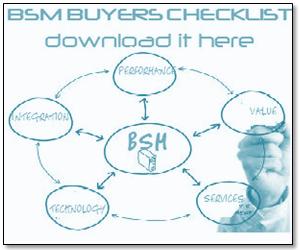
A friend of mine, Richard Whitehead, recently posted two blogs (Two Lawyers and Shakin Up) on the topic of service level agreements, contracts and lawyers for cloud based services. My favorite quote in these posts, “Send lawyers, guns and money”. All I can say is, if it comes to lawyers, guns and money, it just ain’t worth it. Far too much time is spent on the negotiation and perceived service missteps than is put into the quality of service and driving revenue.
This is a topic near to my heart as I embark this week to draft my own presentation on the topic, Cloud Service Contract Get Stormy, for the upcoming Data Center World Conference in Orlando later this year. As an analyst, I would review many outsourced service level agreements against industry best practices, reasonableness and guidance regarding how to manage services. There are a few common pieces of advice I suggest:
- Service Accountability – you as the IT organization maintain ultimate accountability for the service to the business and your customers.
- Operational Processes – you as IT no longer own “how” the service is delivered only that it is delivered in a manner that is acceptable.
- Operational Tools – you as IT no longer own the management tools and technology that monitors the delivery of service.
- Service Levels – accept the standard service levels, drive toward economies of scale and standardization.
- Penalties – protect for gross negligence and harm to the business, not perfection for the sake of perfection.
- End of Contract – data, who owns it, how is it transitioned – be sure the transition is covered to avoid hidden costs.
The first thing I suggest that organizations review are their services – not all services are created equal. Some drive revenue, others drive out costs from the organization. I’ve covered this categorization in another post Finding Your Services. Classify your services and source the commodity services that are not unique to your organization. The more unique, the more mission critical, the less appropriate it is to outsource unless you are early to market and do not have the talent in-house and need to buy it. There is risk and reward to buying talent to deliver a market changing service and there is some forgiveness in the market for hiccups in this scenario. Source with clear objectives and manage as such.
The second thing I usually end up discussing is “how” the service is delivered and “managed”. Do you tell your electricity provider how to deliver electricity to you home or business? Do you tell them the proper management practices and tools to use to deliver electricity? And yet having adequate power is a piece of delivering IT services. I believe what makes the sourcing of IT services different is that we as IT organizations have some expertise in delivering the commodity services and while we want to insure quality service, we need to step back and define the service and performance objectives and manage to those shifting our role from service deliverer to service manager. It is up to the service provider to deliver the service and meet the agreed upon objectives. The role of IT is shifting in these mixed environments to a service manager and communicator of service to the business as it drives revenue. This is illustrated as the hottest growing job in IT is a Business Architect according to a recent article in InfoWorld translating technology as service performance to the business.
The next thing that comes up is the viability of the service provider. This takes us slightly back to the previous paragraph to insure the provider has processes, practices and tools in place to reasonable manage the service without mandating how the service is delivered. There are other points of reference here as well regarding their financial viability, duration in business, other customers, references not just for the good service, but references when service failed and how the provider responded.
Service levels and penalties is another topic of discussion and where visions of guns and lawyers dance around. Go back to step 1 and remind yourself of the value of the service, don’t demand unreasonable service levels as they will come at a premium price and thus don’t impose high penalties also raising the risk of the service to the provider and thus cost to you. Understand reasonable levels of performance, availability, responsiveness and security. The more custom and imposing your SLAs and penalties, the higher the cost of the service and thus the higher the cost to manage the service.
Finally, do not overlook the end of contract transition. Insure there are no surprises or hidden costs in transitioning systems, data, etc.
The final, final discussion is monitoring the performance of the service. Budget 7% of the contract value to manage the vendor and service. This includes the monitoring of the service to avoid those perception versus reality discussion of the health of the service. It is still ITs responsibility to manage the service and know how it is performing to take appropriate proactive action in the event there is a hiccup whether that be to deploy additional resources, re-direct resources, etc. for services delivered in-house, by providers or in the growing mixed environment.
In the end, the choice comes down to “pay now or pay later”. I find it money better spent to monitor, manage and nurture the service provider relationship in the delivery of quality service over paying a lot more to bring out the guns and lawyers at the end. The first drives revenue growth, the second illustrates failure and lost revenue to lynch a scapegoat.
I too listened to the customer speak that Richard references in his second blog post that does business with a handshake and works toward driving revenue. Lawyers and Government are not the answer to regulating cloud service providers – drive your own destiny and revenue. Ok….back to my presentation, come to Data Center World and hear more!
Michele














